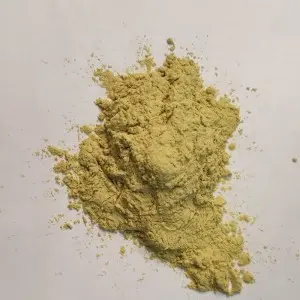Oct . 06, 2025 00:30 Back to list
Plant Pollen for Pure Pollination: What Makes Ours Superior?
HIGH QUALITY APRICOT POLLINATED POLLEN: Field Notes, Specs, and Real-World Results
If you work in orchards long enough, you learn two truths: weather is moody, and yield hates uncertainty. That’s why I keep an eye on plant pollen solutions that de-risk fruit set. This apricot line from Caozhuang Development Zone, Fanzhuang Town, Zhao County, Shijiazhuang, Hebei Province isn’t just a brochure item—it’s something growers actually talk about, usually around harvest, with a grin.

Why cross-pollination keeps winning
Many apricot cultivars are self-incompatible, and even the “selfers” benefit from targeted cross-pollination. In side-by-side blocks I’ve seen—and the vendor’s internal trials echo this—artificial cross-pollination generally lifts commercial-grade ratio and improves fruit uniformity. Their trial notes: Orchard A (natural pollination) averaged 60% premium-grade fruit; Orchard B (with applied apricot pollen) hit 75%, and overall yield rose ≈30%. Not every season mirrors these numbers, but the direction is consistent.
Product snapshot and where it fits
- Brand/product: HIGH QUALITY APRICOT POLLINATED POLLEN
- Origin: Hebei Province, China (Caozhuang Dev. Zone, Fanzhuang Town)
- Use cases: Apricot primary; also used as a cross-pollen source for pear and related Prunus in mixed orchards
- Typical users: Commercial orchards, pollination service providers, horticultural research labs
Process flow (how it’s made, tested, and kept viable)
Materials: selected donor cultivars; dried anthers; controlled sieving. Methods: dehiscence under low-humidity, multi-stage filtration, cold-chain packing. Testing: in vitro germination on Brewbaker & Kwack medium; viability via TTC/Alexander stain; moisture by Karl Fischer (around 4–8% target); purity by microscopy; phytosanitary checks. Service life: ≈12 months at −18 to −20°C sealed with desiccant; ≈3–6 months at 0–4°C; real-world use may vary with handling.
Technical specifications
| Parameter | Typical Value | Notes |
|---|---|---|
| Germination rate | ≥ 80% (lot data often 80–90%) | In vitro (BK medium, 25°C, 2–3h) |
| Purity | ≥ 98% | Microscopic count, debris minimized |
| Moisture | ≈ 5–7% | Karl Fischer method |
| Dosage | 300–600 g/ha (orchard); 1–3 g/tree mature | Calibrate to bloom density and weather |
| Storage | Sealed, −18 to −20°C | Avoid thaw–freeze cycles |
Vendor comparison (indicative)
| Vendor | Origin | Certifications | Germination (≈) | Notes |
|---|---|---|---|---|
| JML (this product) | Hebei, China | ISO 9001; Phytosanitary; COA | 80–90% | Tight cold-chain, lot test data shared |
| Generic Supplier A | Mixed | Basic QA | 65–80% | Variable moisture, limited traceability |
| DIY Orchard Collection | On-farm | N/A | 40–70% | Labor heavy; inconsistent purity |
Application tips
- Timing: apply at 20–70% bloom; repeat after rain or frost events.
- Method: electrostatic blower, bee-carrier supplements, or hand applicator.
- Mixing: if using extenders, test jar first; don’t exceed 30% extender by volume.
- Storage: thaw sealed at 2–4°C overnight; use within 24–48h after opening.
Customer feedback
“We saw tighter size grading and fewer misshapen fruits.” — mid-altitude apricot grower, Gansu. Another advisor told me, “It isn’t magic; it’s control. When bees hesitate, this keeps the schedule.” Honestly, that sums up why plant pollen programs have become a standard line item.
Compliance and standards
Vendor indicates ISO 9001-driven QC, lot-level COA, and phytosanitary documentation for export. Test references: TTC/Alexander stain viability, BK germination medium, moisture via Karl Fischer. For safe use, follow local agricultural input regulations and orchard GAP protocols.
Case study (orchard A vs. B)
In matched apricot blocks: A (natural pollination) vs B (artificial cross-pollination with apricot plant pollen). Results: premium-grade ratio 60% vs 75%; total yield ≈30% higher in B. Weather was mildly adverse—exactly when applied pollen tends to shine. Your mileage will vary, but the commercial uplift is hard to ignore.
Bottom line
If you need more uniform fruit set, earlier picks, and insurance against finicky bloom weather, this apricot plant pollen is a practical lever. It’s not the cheapest input, but the harvest math—when done honestly—usually pays it back.
Authoritative citations
- FAO. Pollination of Cultivated Plants: A Compendium for Practitioners (2018).
- ISHS. Pollen handling, storage, and viability testing protocols (Acta Horticulturae, various).
- ISO 9001:2015. Quality management systems — Requirements.
- Brewbaker, J.L. & Kwack, B.H. The essential role of calcium ion in pollen germination (1950s–1960s research corpus).
-
Comprehensive Guide to CE Certification Apricot Pollen Health Benefits
NewsNov.24,2025
-
CE Certification Mango Fruit Protection Bags: Enhancing Export Quality & Sustainability
NewsNov.23,2025
-
CE Certification Varieties Suitable for Collecting Apple Pollen – Ensuring Quality & Compliance in Apple Breeding
NewsNov.22,2025
-
Comprehensive Guide to CE Certification Mango Cover Bags – Quality, Standards & Trends
NewsNov.22,2025
-
What You Need to Know About CE Certification Peach Blossom Powder Keto
NewsNov.21,2025
-
CE Certification Pear Pollen Collection Base – Ensuring Quality & Sustainability in Global Horticulture
NewsNov.20,2025